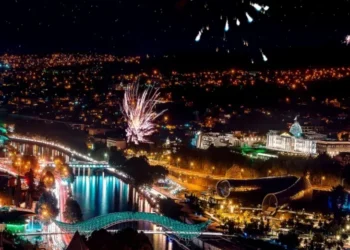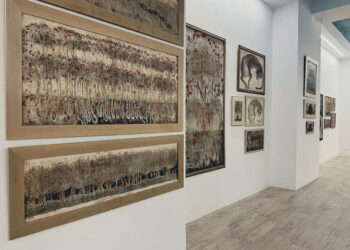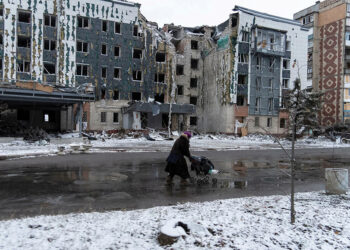The newly established AFA – Art Foundation Anagi officially opened its doors with an exclusive private viewing at its headquarters on 12 Zurab Avalishvili Street, Park Home Vake. The event heralded the arrival of a visionary cultural institution dedicated to preserving Georgia’s artistic heritage, while fostering innovative curatorial practices and fresh creative dialogues. Founded by renowned cultural leaders Zaza Gogotishvili and Thea Goguadze-Apfel, the foundation sets a precedent in the Georgian cultural landscape by merging tradition and experimentation across multiple thematic spaces.
“AFA – Art Foundation Anagi thoughtfully presents important moments from Georgian art history, creating meaningful connections between the past and the present,” noted Massimiliano D’Antuono, the Italian Ambassador to Georgia, reflecting the international appreciation the foundation has already garnered.
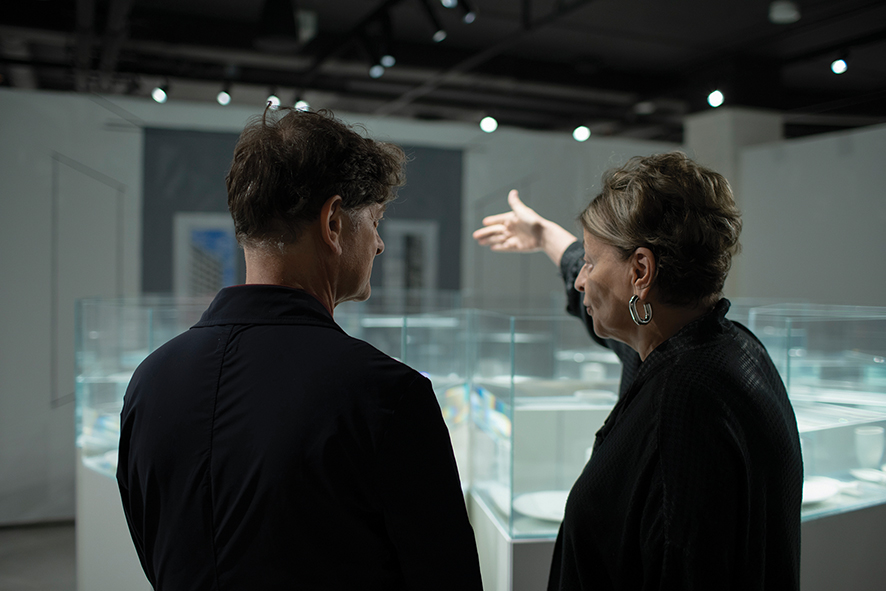
AFA’s Vision: A New Home for Georgian Art
Co-founder and Project Author Thea Goguadze-Apfel elaborated on the foundation’s deeper aspirations: “The idea behind AFA was to build more than just an exhibition space. We wanted to create a place where Georgian art—past and present—can be seen in a new light. It’s about connecting generations, opening conversations.”
True to this vision, AFA launched an ambitious program that integrates historical context with contemporary exploration, positioning itself as a dynamic platform for dialogue within Georgia and beyond.
Thematic Spaces: A Curated Journey Through History and Innovation
“The AFA – Art Foundation Anagi is structured around several distinct thematic spaces, each serving a specific function within the foundation’s broader curatorial framework,” explained Mariam Shergelashvili, one of the exhibition curators. She outlined the spaces:
AFA Curatorial Hall: Hosting the research-driven exhibition Fragments of Transition was a space that featured pivotal works from the late 1980s and early 1990s by Georgian artists Alexander Bandzeladze, Luka Lasareishvili, Mamuka Japharidze, Iliko Zautashvili, Gia Rigvava, Guela Tsuladze, Koka Ramishvili, alongside archival material on Gia Edzgveradze. The exhibition bridges historical narratives with contemporary interpretation, highlighting a transformative era in Georgian art.
AFA Gallery: Extending the exhibition concept Fragments of Transition, the presentation continues in the AFA Gallery space, fostering a dialogue between two prominent artists, Karlo Kacharava and Mamuka Tsetskhladze, curated by art historian Keti Tsetskhladze.
AFA | Sergo Kobuladze saw a meticulous reconstruction of the iconic artist’s studio; a space presenting original works, drawings, and a rare archival film, immersing visitors in Kobuladze’s creative world.
AFA Archive: Curated by Konstantine Bolkvadze featured Gregor Danelian’s Cappricios, an exhibition exploring the painter’s distinctive artistic language.
AFA Object: This room housed Lia Bagrationi’s site-specific installation 13 Aquariums and a Fish, probing symbolic and philosophical themes through immersive materiality.
AFA Photo and AFA Movie: In partnership with Gallery Fotoatelier, this area displayed Sergei Parajanov on Set, a photographic series documenting behind-the-scenes moments from the film The Legend of Surami Fortress, accompanied by a screening of the film itself. The space also featured Giorgi Shengelia’s contemporary photography project Accidental Portraits.
Mappa Cartographica: Offering a rare collection of original historical maps and privately owned antique books, this space traced journeys through time and borders.
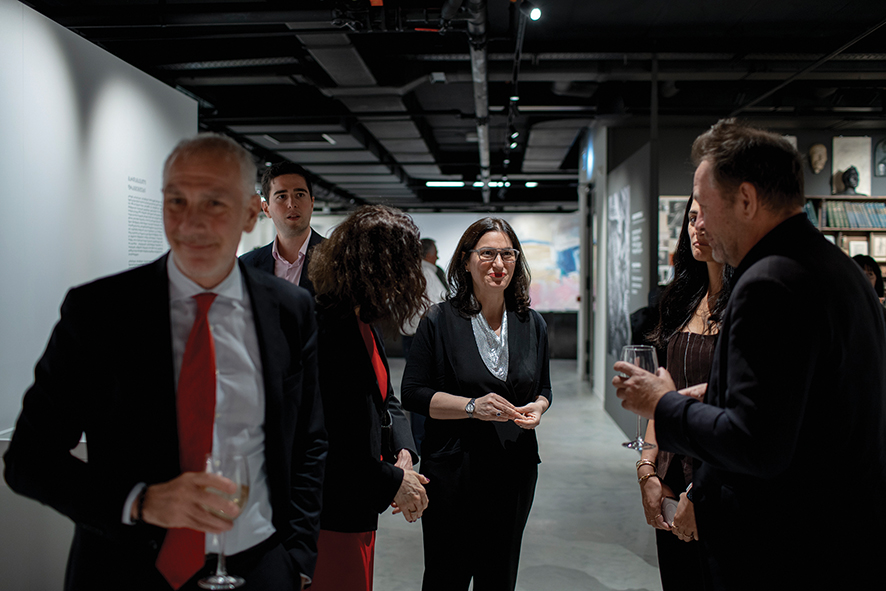
Fragments of Transition: A Narrative of Return and Renewal
The exhibition Fragments of Transition stood as a cornerstone of the foundation’s mission. Many of the works displayed had been absent from Georgia for decades, residing primarily in private collections abroad.
“It’s been deeply meaningful to support the return of these works to Georgia after so many years,” said Françoise Friedrich, who facilitated their repatriation. “Many of them were created during a moment of transition when artists were responding to rapid shifts in society, politics, and identity. There’s a rawness and urgency in the work that still speaks powerfully today. Seeing them exhibited here, in a space designed with such care and historical awareness, is incredibly moving. It gives these works the attention and context they deserve. For me, this is not just about revisiting the past—it’s about recognizing the enduring relevance of these voices and the stories they carry. AFA has done something truly valuable by making this possible.”
Eka Enukidze, the project advisor, added critical historical context: “This is a truly unique exhibition. It all began in Cologne with an exhibition titled Dialogue, which featured not only Georgian artists but also their European counterparts. For many of the Georgian participants, it was the first time—following the collapse of the Soviet Union—that they had the opportunity to travel and exhibit in Europe. The Berlin Wall had just fallen, and this marked their first real contact with the Western art world. The exhibition was received with great enthusiasm and led to years of continued collaboration. A real dialogue was established between Georgian and Western European artists. Now, to see these works return to Georgia—many of which have been in private collections in France for decades—is incredibly meaningful. After 35 years, these pieces are back in Tbilisi, and for the artists themselves, it’s an emotional and powerful moment. When the foundation officially opens in September, we hope this will not only be a reflection of that historic exchange, but also a renewed opportunity to reopen that dialogue once again.”
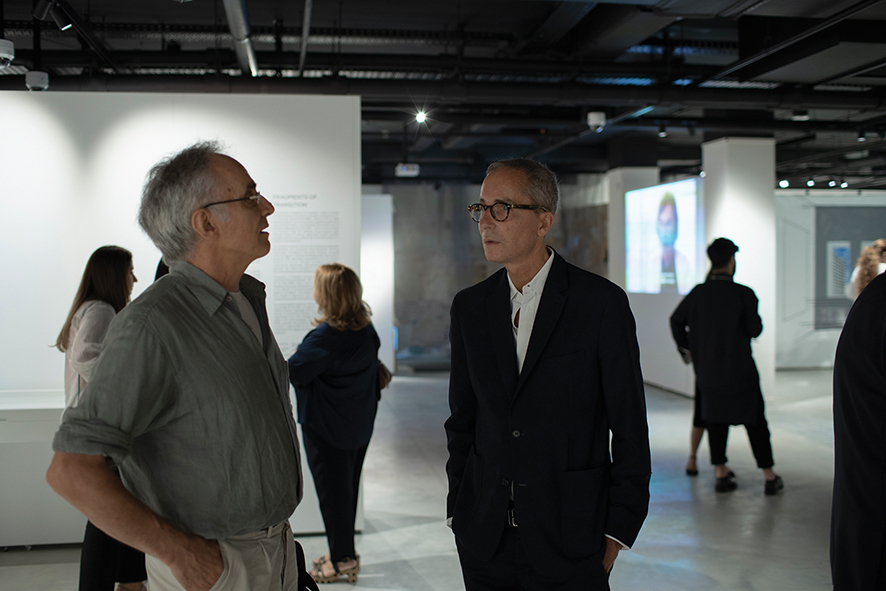
A Unique Cultural Destination in Tbilisi
The private viewing attracted considerable attention from international cultural figures and journalists. Jean-Jacques Le Gall, a French cultural magazine journalist, remarked, “This is my first visit to Georgia, and discovering AFA – Art Foundation Anagi was a real highlight. The foundation stands out for its modern approach—not only in terms of architecture and design, but in how the exhibitions are structured. Each space is immersive, thoughtfully curated, and offers a clear sense of purpose. It’s a place where the visitor is guided through a layered experience, both spatially and intellectually. AFA feels current, international, and deeply connected to its context.”
Beyond exhibitions, AFA’s foundational mission is to foster a sustainable and dynamic creative ecosystem in Georgia, one where tradition and experimentation coexist symbiotically. Through collaborations with Georgian artists, curators, collectors, and international partners, the foundation articulates new perspectives that ensure Georgia’s cultural voice resonates on the world stage.
Massimiliano D’Antuono underscored this role: “AFA – Art Foundation Anagi thoughtfully presents important moments from Georgian art history, creating meaningful connections between the past and the present.” This ongoing dialogue between history and innovation is reflected across the foundation’s spaces, each contributing to a multifaceted understanding of artistic identity and legacy.
Looking Ahead
The July 1 private viewing was just the beginning for AFA – Art Foundation Anagi. While the foundation officially opens in September, this event already signaled the arrival of a major new institution within Tbilisi’s cultural infrastructure.
With its rigorous research-based exhibitions, immersive installations, archival projects, and cross-disciplinary collaborations, AFA stands poised to redefine the role of an art foundation in Georgia—not only as a guardian of cultural legacy but as a generator of new artistic futures. Its layered approach, combining scholarship, curation, and contemporary practice, sets a high standard for how art institutions can engage meaningfully with both history and the present moment.
As Thea Goguadze-Apfel reflected, “This is just the beginning. We hope AFA will grow into a lasting part of the cultural scene in Tbilisi.” With the enthusiastic support of artists, historians, diplomats, and the international arts community, AFA – Art Foundation Anagi is well on its way to becoming a vibrant hub where Georgian art is celebrated, studied, and innovated for generations to come.
By Kesaria Katcharava


